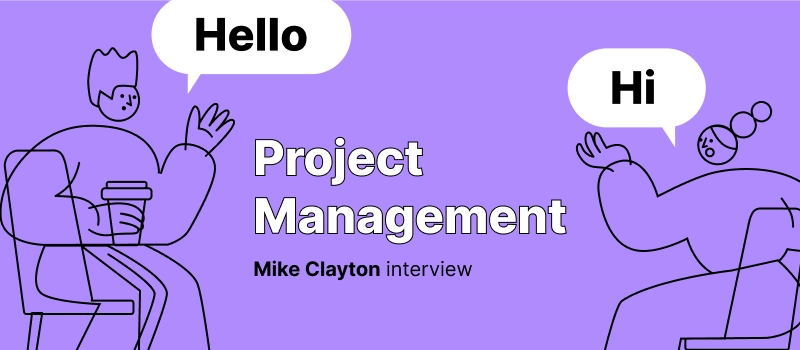
Are you an eCommerce business owner working on launching your store but feeling overwhelmed by all the tasks that need to be done?
We’ve got something that’ll make your life a lot easier: a FREE eCommerce project plan template with examples!
It’ll help you define your goals, build a marketing strategy, and figure out how to get started on the right foot.
Key Components of the Excel eCommerce Project Plan Template by actiTIME
Our template is a tabular project plan that includes merely 7 core sections: project goals, deliverables, budget, timeline, KPIs, and a marketing plan.
Each section is prepopulated with demo data to help you get started.
Goals and objectives define what you ultimately want to accomplish with your project, and how will you measure success.
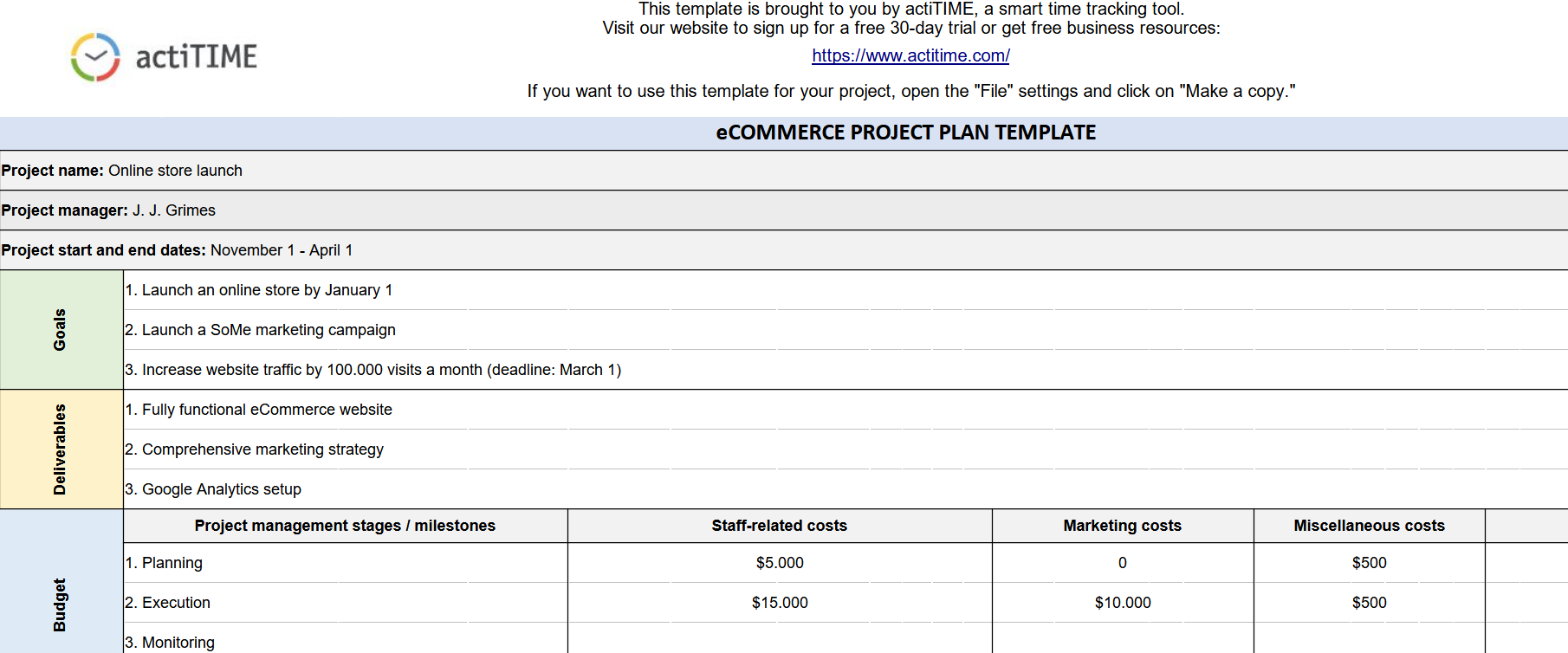
Are you aiming to make a certain number of sales in your first month? Or maybe you want to build a loyal customer base by the end of the year?
Deliverables are the tangible outputs you need to complete to achieve your goals, such as launching a website, creating product listings, or developing a social media strategy.
Break these down into bite-sized tasks so you can check them off as you go.
Budget includes costs like website hosting, product sourcing, marketing expenses, and any tools you might need and a little extra for unexpected expenses.
Timeline maps out the main project stages (planning, execution, monitoring and analysis) and shows when each task needs to be completed.
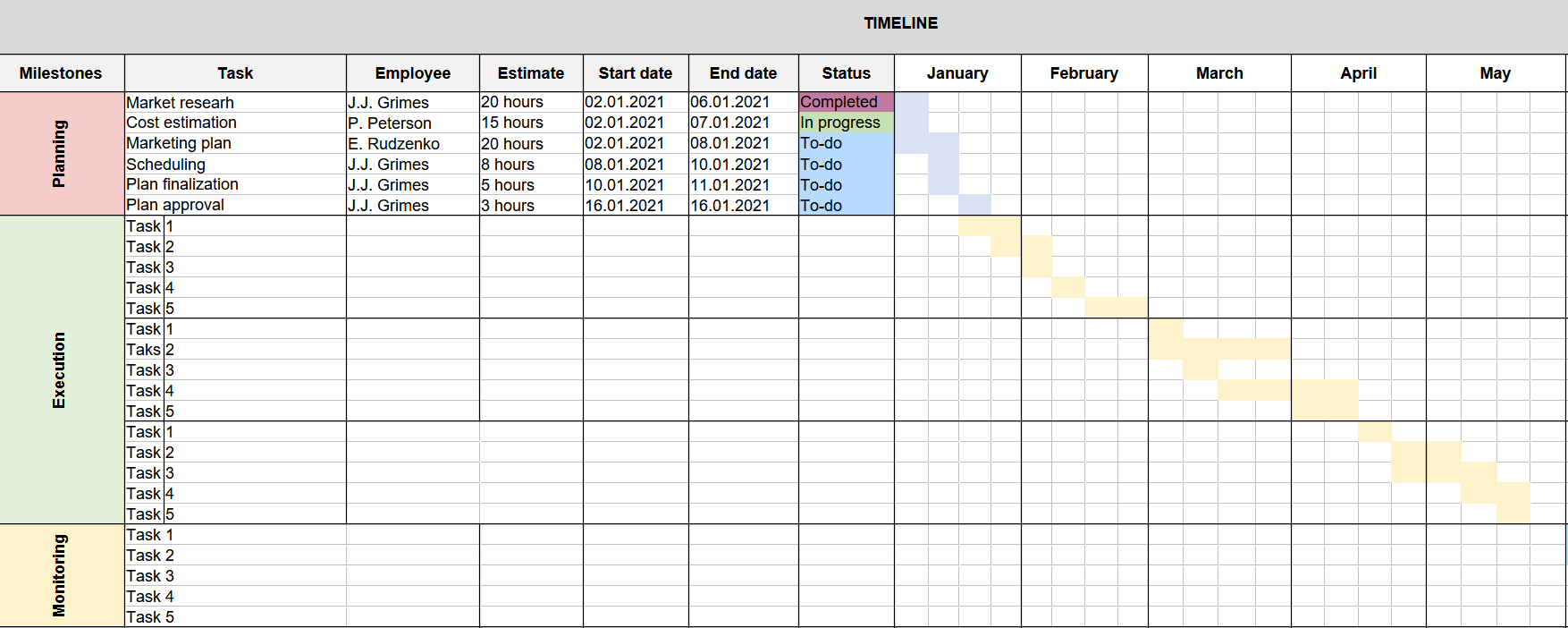
Most eCommerce projects begin with market research to understand current players in the space and what makes them successful. After that comes designing the website according to best practices, setting up necessary systems for payment and fulfillment, and finally, executing marketing campaigns for online promotion.
The span of this entire process could last several months or longer, depending on project complexity. So, you’ll need to figure out which tasks, activities, and milestones it will involve, estimate them as accurately.
KPIs (Key Performance Indicators) are your tools for measuring success. These metrics can be anything from website traffic and conversion rates to average order value, and customer retention rates. Anyway, they help you track how well your eCommerce store is doing.
Marketing strategy outlines how you plan to attract customers to your store. Will you focus on social media ads, influencer partnerships, email campaigns, or content marketing?
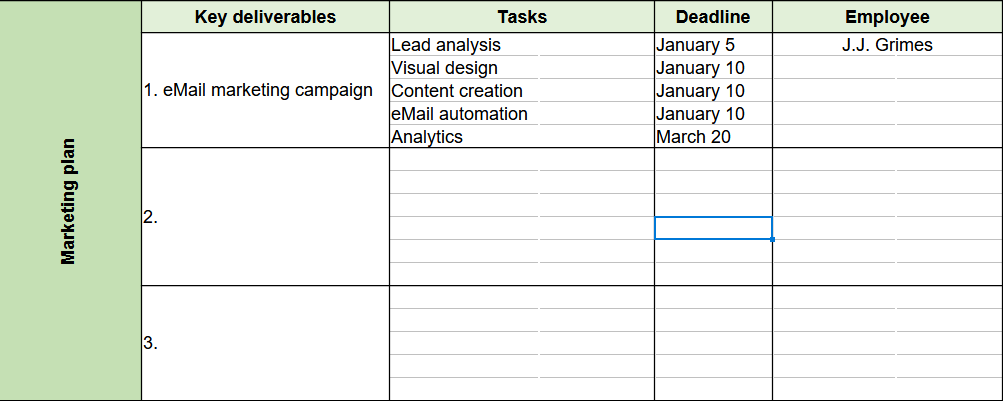
Whatever route you choose, make sure it aligns with your target audience and budget.
Put simply?
Using actiTIME is like having an assistant who runs the show without ever needing a coffee break. So sign up for a free online trial today and give it a go!
How to Use Our Free eCommerce Project Plan Template
Our template provides easy-to-follow steps so you can quickly start to work on transforming your business. Simply customize it to fit your needs, fill it out with relevant information, and start planning.
Step 1: Add project details, such as name, manager, start and end dates, etc.
Step 2: Fill in all sections and include your teammates who will be responsible for different tasks and project stages. If you need to add more rows, feel free to do so.
Step 3: Include time periods and numbers to set limits for costs and task deadlines.
Step 4: Regularly review your project plan. Make it a habit to regularly check your team’s progress to identify if someone needs help or the plan itself requires readjustment.
Is Our Excel Project Plan Template Right for You
Our template can come in handy in the following cases:
• When you need to visualize the phases of a project, set timelines, and allocate resources.
• If your team members need a centralized document to stay informed about project updates and changes.
• To share with stakeholders for transparency regarding project status and timelines.
• If you need to regularly report on project status and milestones achieved.
• To keep a historical record of project progress for future reference.
• When project requirements change, and you need to quickly update schedules, tasks, or resources.
Get Yourself a Dedicated eCommerce Project Management Assistant
While using an Excel project plan template can be beneficial for many projects, especially smaller ones, one day you might want to consider a more versatile tool that can be adapted to fit various types of tasks and teams. And actiTIME is one of the best of them.
As a multifunctional task and time management tool actiTIME is perfect for assigning and prioritizing tasks within projects.

Then, as team members log their hours on specific tasks, project managers analyze where time is being spent and measure such KPIs as on-time task completion rate and actual vs. estimated performance time.
Besides that, actiTIME allows you to keep tabs on staff-related project expenses, which helps to reduce the risk of cost overruns and ensure that your project runs smoothly.
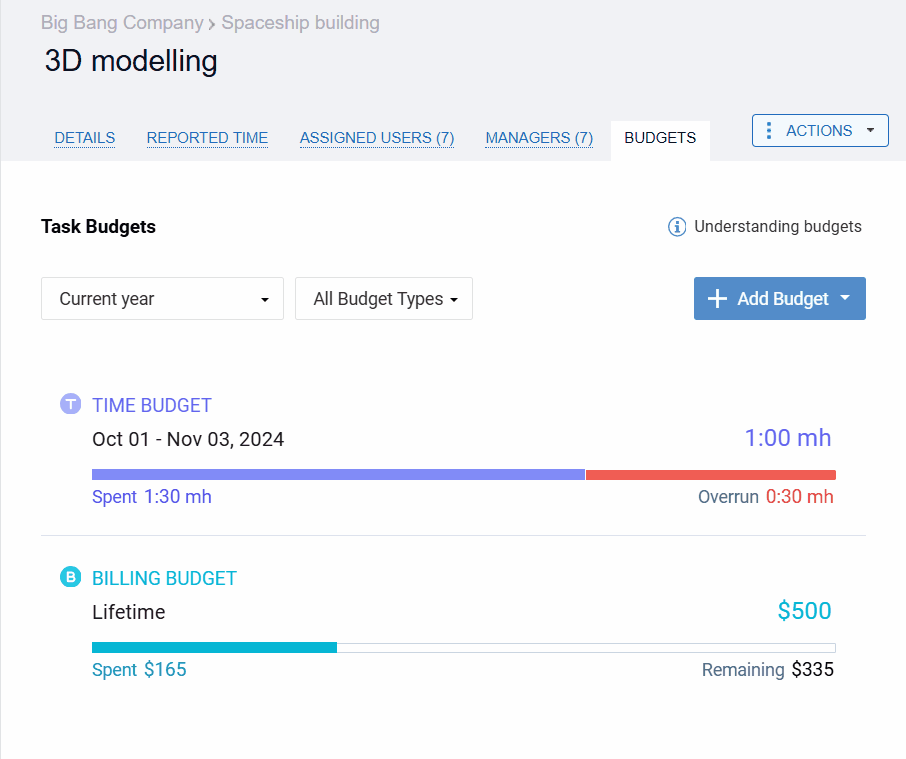
All the collected data goes into the dashboards that display the most relevant metrics and information for specific projects in real time.

So, if you’re looking to enhance your e-commerce project management strategy, consider giving actiTIME a try. Grab you free trial and enjoy 30 days of unlimited use!














































